Susana's pathway
Susana's pathway to Associate Professor, Lab Head, and Director of the Paleo-Primate Project Gorongosa
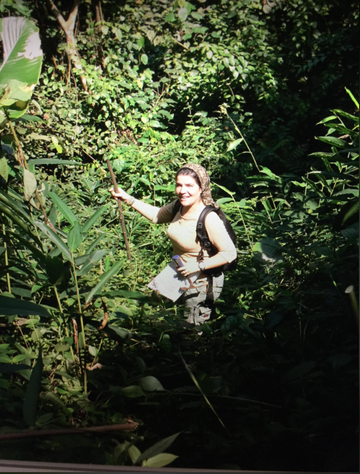
In the Nimba mountains, Guinea, 2008, taking Primate Archaeology to its maddest level – with a geological hammer in hand, trying to do a geological survey/transect and finding stones under meters of thick vegetation and in very steep terrain! Photo by Kathelijne Koops.
My pathway into academia is a very non-traditional and accidental one! I was born six months before the April 25 Carnation Revolution that ended 48 years of dictatorship in Portugal, into a family that was very active in the fight for democracy and had strong links to arts and politics. I grew up in Leiria, at the time a relatively small town on the central coast of Portugal. During the 1970s, Portugal’s academic and economic development was heavily biased in favour of Lisbon and Porto (it still is!), and we were seen as the ‘province’ or countryside kids. Dreaming about exploration and discovering the world was done within the limits of our own neighbourhood and by reading books and watching TV that was just starting to broadcast (in colour!) some international programs.
My family was very lively, with my parents engaged in theatre, singing and activism (when they were not working as civil servants!) and I vaguely remember ‘touring’ the country with their band ‘Vanguard’ when I was 5-6 years old and singing from the top of a chair (and being grumpy if the microphone was too high!)… Although I did not pursue music academically, it has always remained a very important part of my life and interests. I always loved reading about exploration and mysteries, writing stories and engaging in rhetorical discussions, and from a very young age I was told that those were my vocations, so I suppose I convinced myself that everything I liked or was good at belonged to the field of Humanities. At the same time, I was fascinated by exploring the unknown (in my neighbourhood!) – as 8 or 9-year-olds we would discover every inch of each hill and old monument and try to find secret passages that connected to the Medieval Castle of Leiria – very exciting times!
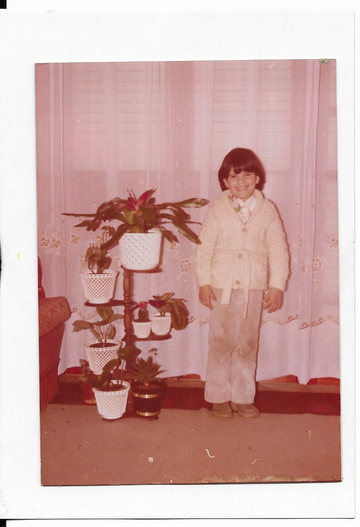
1981, I was 8 years old and remember that I had just arrived from a very important exploration in my neighbourhood that included taking care of some newly born stray puppies! Taken by my mother, Florinda Carvalho.
I have an older sister and brother, and my family had just enough for all of us to have a simple but very happy childhood, with lots of camping holidays, home parties with lots of music, dancing and the best home-made food, Christmas with 20+ around the table, and just lots of precious family time. One of my uncles, Lino de Carvalho, was also a very influential figure in my upbringing - and a respected politician in Portugal – and, retrospectively, I can see how he seeded in me the pleasure of being inquisitive and acquiring knowledge, both of the past and present. He showed me books, music, exhibits and took me traveling around Portugal – he seemed to believe I could fly high and made me believe too. But academia was not something I was thinking about until I was 15-16 years old. By that time, during high school, I had what, at the time, felt like conflicted interests: I loved writing and history/archaeology and anthropology, but I also loved wildlife and nature and was very attracted by the idea of exploring far away unknown places. Life would show me later how these interests all belong to a similar class of explorations. No doubt that the early David Attenborough documentaries, the first Indiana Jones movie and Gorillas in the Mist all made an impact on me during the 80s!
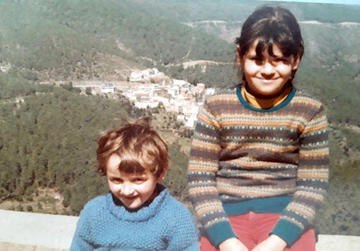
My first trip to Serra da Estrela, the highest point of continental Portugal, ca 1983. Left: My cousin Vasco Carvalho (now a Professor of Economics at Cambridge University) with the author. Vasco and I were awarded Philip Leverhulme Prizes in the same year, 2016! Photo taken by Lino de Carvalho.
I am a first generation academic in my family, the first to go to University and do a BA. My parents were supportive of that path – as long as I could enter a state University, which charged minimal tuition fees at that time - and they made enormous efforts for me to be able to do my first degree in Porto, far from home. I did my BA in Archaeology when this was definitely not a popular subject in Portugal. Many people would ask me: Archaeology? What is that; can you get a job with that degree??! My BA time is full of conflicted memories. First, I did poorly in the degree – and that should have shot all my chances at an academic path. Now I can see why that happened, but at the time all was blurred. In part the degree was not the excitement I expected and, at that time, in the 90s, academia had many, many more problems when it came to equality and inclusivity. There was definitely some regionalism at play – and anyone coming from ‘the south’ had a much harder time integrating and becoming part of the ‘illuminati’. But also, many of my best friends from Leiria ended up going to Porto too and I was more interested in spending time with them and enjoying my first experience of being away from home than I was in spending time studying. Add to this, by the end of my 3rd year both my parents had been diagnosed with cancer and my world was just spinning violently. All of this was a recipe for average marks. However, I was doing very well in my summer excavations in the south of Portugal, and I was selected to go to Sicily in 1995 (during my 3rd year of the BA) on an Erasmus scholarship. During that year, outside the classroom, I finally found a balm of archaeological wonders of all ages and experienced getting to know new cultures and making friends abroad. This marks the (late) moment when I started to understand what I really liked, who I was, and how I could fulfil my explorer side – I was 20 years old when I entered a plane for the first time and saw the world beyond the Iberian Peninsula.
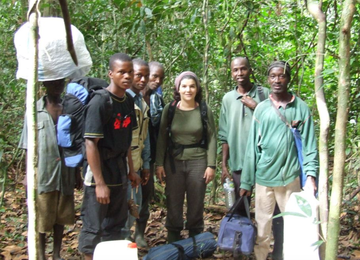
Myself and field assistants Jean Marie Kolié, J. Malamu, L. Tokpa, A. Kbokmo, C. Koti, O. Mamy, Henry Didier Camara, captured during a field trip to Diecke forest in 2006, a large unexplored area for chimpanzee research in Guinea Conakry, where we slept in huts we constructed and stayed in bouts of 10 camping days, until the supplies would run out (Photo by Jules Doré)
So far, two messages to you, the reader: you can have a brilliant career in academia no matter what background you have, no matter how indistinct your first-degree choice was and no matter what marks you obtained. Of course, we should all excel at all times and many of us do, but serendipity is probably the best word to describe how life unfolds and many of us need certain conditions to fully blossom and achieve our best potential.
After my BA I had no interest – and thought it would be pointless – to pursue an academic path, so I found a job, and began a career as a professional archaeologist. I worked first in the south of Portugal, in the City Council of Montemor-o-Novo for four years, then as the archaeologist of Leiria City Council for another four. That was a critical period of growing, learning, affirmation, and I have many good memories of both places. I was asked to start from scratch two archaeology units and was entrusted with huge projects like the recovery of Medieval Castles, mapping of heritage areas, directing excavations across all chronologies, and creating new museums and award-winning exhibits. That time, between the ages of 24 and 32, was really productive and I learned so much working on so many different projects and teams, that it reignited my passion for knowledge. Outside work I had also reignited my passion for music and was playing with a local band (that rarely left the garage!) and enjoying my DJ sessions during the weekends. I heard about a Master’s program in Human Evolution that was very new at the University of Coimbra. A very good friend from primary school had just done it and was raving about it. The bells started to ring in my head: Maybe it was not just archaeology but human evolution that I was looking for and that I was really interested in. I applied in 2003 and had an interview with Prof. Eugénia Cunha (today she is one of my dearest friends) where she explained that most students from Humanities had a very hard time doing the degree and finishing it. She took a chance on me, even with my less than stellar marks from my BA and accepted me after I promised I would work extra hard to catch up on all the science subjects. I did the Master’s working full time and had loads of fun during those years, working and studying hard. We had a remarkable Master’s cohort, many of us went on to pursue international careers and are known names in our fields of research. We became a very cohesive group and did great things together, like founding the Group of Studies in Human Evolution, which is still going!
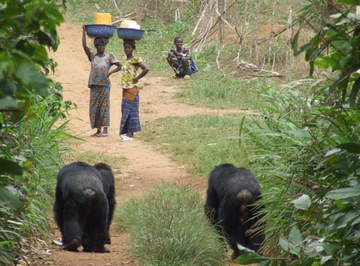
Following chimpanzees in Bossou, Guinea, in 2006. Chimpanzees and people have co-existed in the village of Bossou for millennia
In Coimbra I finally enjoyed academia, the student life and friendships, the interaction with senior academics, and I discovered the subjects that I was truly passionate about. First, there was human evolution: studying all the hominins in 2004 felt like pure pleasure. And then, the teaching in Primatology by my late supervisor Claudia Sousa left me absolutely fascinated by extant primates. I signed up to join a primatology course in Montepío Forest, Mexico, studying platyrrhine primates – and I returned knowing that the tropical rainforest was the most extraordinary place I had ever been to. It was the first time I felt that we truly belong to nature, to that precise habitat and we are only a tiny, tiny part of the ecosystem. I loved the howler monkeys too, but they were just a little too shy and quiet for someone starting to learn how to record behaviour (but very loud in their vocalisations)! After Mexico I decided I wanted to do my thesis in primatology. I went to visit Claudia in Lisbon (where she worked full time) maybe ten times, after I ended my workday in Leiria, and insisted that I must go to Africa with her. Claudia went from sceptical to extremely tired of my insistence but ended up agreeing that I could write a proposal for a Master’s project, but it had to make use of my background and previous knowledge as an archaeologist. I can see now how having a civil servant archaeologist wanting to turn primatologist, at the age of 31, may have looked quite eccentric and a recipe for disaster. After some sleepless nights during 2005, the ideas that turned out to be the roots of what is known as the field of Primate Archaeology today, came to my head and I started to write them down. Claudia was visionary and thought that although the document seemed quite outlandish, it was also novel and maybe worth a chance. She communicated with her PhD supervisor, Prof. Tetsuro Matsuzawa of Kyoto University, who was also the director of Bossou, one of the very few wild chimpanzee research sites in Africa, and shared the proposal. He said: I think we could benefit from having an archaeologist in our team and this is a timely proposal (Julio Mercader was working in Taï, Ivory Coast at that time, excavating the first chimpanzee nut-cracking sites between 2002-07, but doing no observations of primate behaviour).
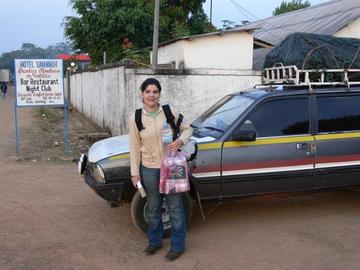
On the way to Bossou in 2008, using a bush taxi and holding tight to water and toilet paper! Photo by Kat Koops
I was told I could go to Guinea Conakry in January 2006 and carry out my field work. Six months minimum of data collection for a Master’s project – take it or leave it. I was still full-time employed by my City Council and had the luck to have the most amazing and supportive superiors; Fátima, Vitor and Isabel were key during this period. Surely it looked like I had gone nuts: the city council archaeologist wants to go to Guinea to study chimpanzees??! My family was puzzled and worried: is she going to lose the job for life she was so lucky to get? And how dangerous are the animals in the forests of Guinea? My then husband was very, very supportive but also obviously worried about this radical change of plans. My employer gave me a leave of absence and I sold my car to have funds to travel to Guinea – there were no Master’s grants during those years. In the interview I said I could understand French (I thought so, from my high school classes) but when I landed in Conakry, I could not understand a word…
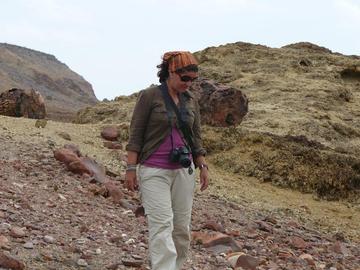
‘Petrified Forest’ in Koobi Fora, Kenya, 2011, Photo by Andrew Du
Those six months in Guinea are still some of the most extraordinary times of my life. The first time I saw a chimpanzee, Yolo (the alpha male of Bossou at the time), I knew that everything I had done, and all the time that had passed until I found my real passion, was all worth it, and that everything happened in its own time. You know you are cut for it when all the bad memories disappear quickly, and you can only remember the wonderful parts of sharing the forest with other apes and just being in nature. I was extremely sick with malaria during that trip, there was a cholera outbreak, and many other bumps, but I also had the best glimpse of what real remote field work was like in the days without electricity, phones, internet, running water, and only eating local food. It was all a huge shock when I arrived but then I loved it all and I now miss that remoteness that allows you to really connect with nature and immerse yourself completely in another world.
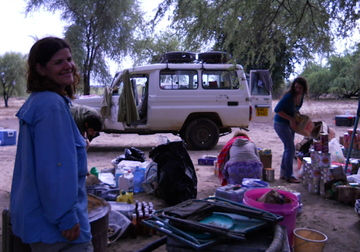
Koobi Fora area in Lake Turkana, Kenya, 2012, after a massive flush flood washed our camp during the night
After ending my field work and Master’s thesis, my ‘career’ suddenly snowballed. I published a paper that was well received, and Bill McGrew wrote to me one day asking if I was considering doing a PhD. I thought he had written to me by mistake (remember Bill?!) and told him I was probably too old for a PhD and that I had returned to my previous job after my Master’s degree. I ended up in Cambridge starting my PhD when I was 33 and having the most amazing time running between West and East Africa: 22 months in Bossou and six seasons at the Koobi Fora Field School in Kenya, following my dream of studying extant primates to model behavioural evolution – focused at the time on technological evolution. I took the best of both worlds, observing chimpanzees and digging some of the oldest archaeological sites in the world! After that chapter, I again made a turn, expanding my interests in research, and study sites – since 2015 my main area of research is Gorongosa National Park, Mozambique, and the study subjects there are baboons and Late Miocene fossils!
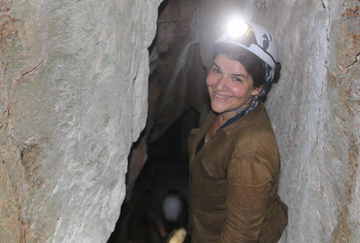
Gorongosa National Park, Mozambique, 2016, digging in a cave
Once I found my academic pathway, at the start of the Master’s, I became a very good student, and shined at pretty much anything I put my mind to. I was offered my current position about 2.5 years after I finished my PhD, which meant I was quite junior (academically) to start mentoring so many researchers. And I have tried my best to share my example and to provide an atmosphere where others can thrive and see their dreams coming true. I hope my pathway can inspire some of you to be anything you want to be. There should be no age limit and no boundaries to start dreaming new dreams.
If you are interested in knowing more about my career, you can also read here: https://conversationsinhumanevolution.wordpress.com/2020/06/06/conversations-with-professor-susana-carvalho. And if you would like to ask me any questions, please reach out to susana.carvalho@anthro.ox.ac.uk.









